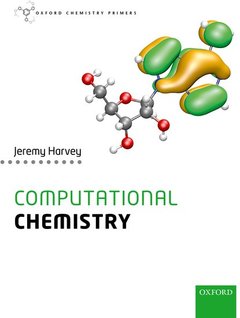Description
Computational Chemistry
Oxford Chemistry Primers Series
Author: Harvey Jeremy
Language: English
Subject for Computational Chemistry:
Publication date: 03-2018
152 p. · 18.9x24.7 cm · Paperback
152 p. · 18.9x24.7 cm · Paperback
Description
/li>Biography
/li>
The renowned Oxford Chemistry Primers series, which provides focused introductions to a range of important topics in chemistry, has been refreshed and updated to suit the needs of today's students, lecturers, and postgraduate researchers. The rigorous, yet accessible, treatment of each subject area is ideal for those wanting a primer in a given topic to prepare them for more advanced study or research. The learning features provided, including exercises at the end of every chapter and online multiple-choice questions, encourage active learning and promote understanding. Moreover, cutting-edge examples and applications throughout the texts show the relevance to current research and industry of the chemistry being described. Computational Chemistry provides a user-friendly introduction to this powerful way of characterizing and modelling chemical systems. This primer provides the perfect introduction to the subject, leading the reader through the basic principles before showing the variety of ways in which computational chemistry is applied in practice to study real molecules, all illustrated by frequent examples. Online Resource Centre The Online Resource Centre to accompany Computational Chemistry features: For registered adopters of the text: · Figures from the book available to download For students: · Multiple-choice questions for self-directed learning
Jeremy Harvey studied Chemistry, obtaining his 'Licence' and Doctorate at UC Louvain in Louvain-la-Neuve, Belgium. His doctoral thesis (1995) was in the area of experimental mechanistic organic chemistry. During postdoctoral periods in Germany and Israel, he became increasingly interested in computational chemistry, and since starting his independent research career in Bristol (1999) has worked in this area, mainly using electronic structure theory methods to shed light on experimental observations and to suggest new experiments. In 2014, he moved from Bristol to a position as Professor of Quantum Chemistry at KU Leuven.
© 2024 LAVOISIER S.A.S.
These books may interest you

Electron Paramagnetic Resonance 39.35 €

Nuclear Magnetic Resonance 39.35 €

Statistical Thermodynamics 39.35 €

